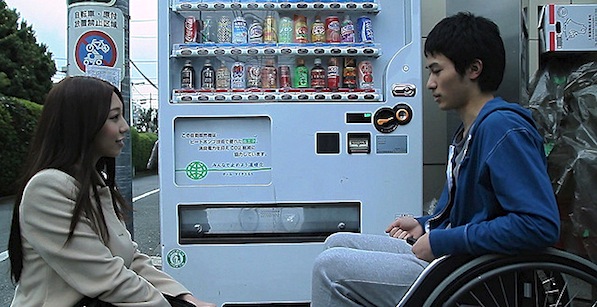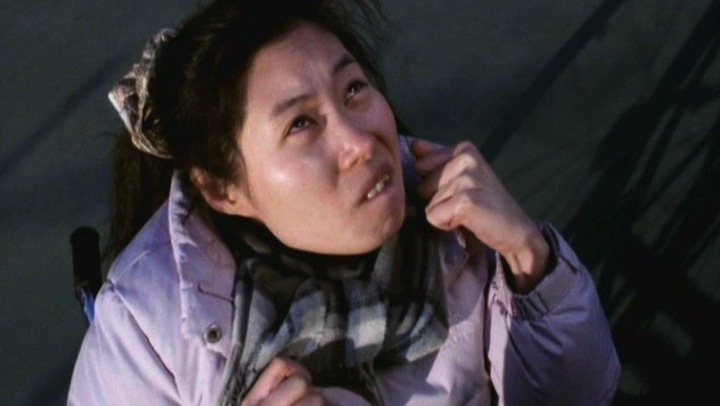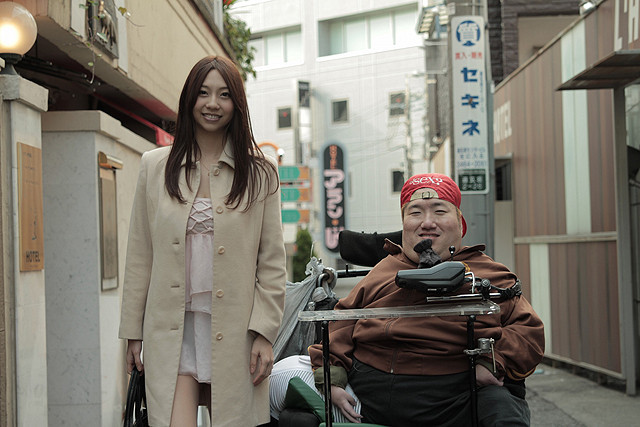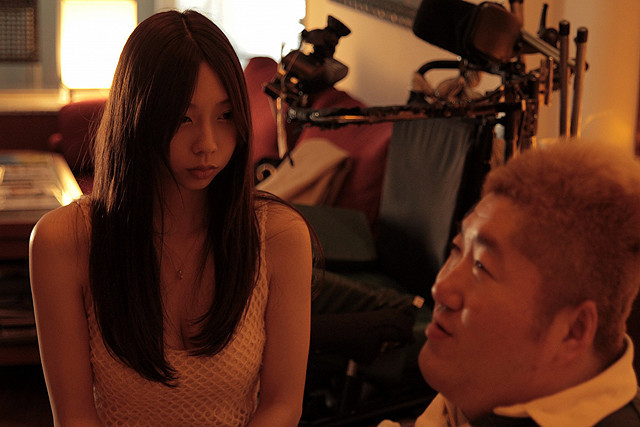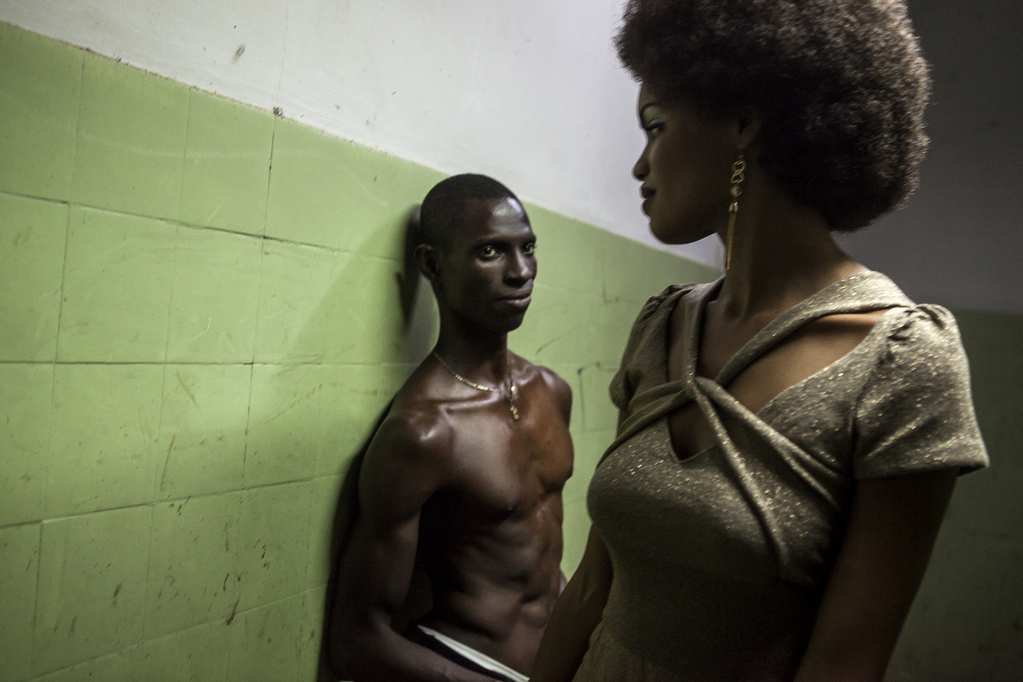“A lot of people, when they watch The Guild, they don’t really think I’m in a wheelchair in real life,” actress, producer, dancer and disability activist Teal Sherer has said, “and when they learn that I’m really in a wheelchair, it, like, shocks them.” Sherer plays Venom in the popular web series and incorporates such awkward real-life moments in her own web comedy series, My Gimpy Life, along with other obstacles that confront disabled actresses and actors trying to make it in Hollywood. (Full Disclosure: I contributed to the Kickstarter campaign of My Gimpy Life‘s second season, which begins this February.)
One of those obstacles is how disabled roles are highly sought after by non-disabled actors and actresses because they are deemed “award-worthy” performances. My Left Foot: The Story of Christy Brown (Jim Sheridan, 1989) won Daniel Day-Lewis an Oscar for Best Actor while Oasis (Lee Chang-dong, 2002) won Moon So-ri Best Actress at Venice, both playing characters with cerebral palsy. Yes, it’s ironic that disabled actors and actresses can sometimes be at a disadvantage in seeking roles in sync with their embodiment. Non-disabled so often play disabled characters, that such is assumed the norm.
It seems the only opportunity where we are permitted to see the real embodiment of the disabled is in films of “real life,” that is, in documentaries—like Nobody’s Perfect (Niko van Glasow, 2008) and Planet of Snail (Yi Seung-jun, 2011). In the wonderful documentary/fiction hybrid Karaoke Girl (2013) by Thai director Visra Vichit Vadakan that has its U.S. premiere at the SF Indiefest running from February 6-20, it’s the documentary side of the hybrid that has a disabled presence: a main character’s father is blind and we witness her return to her home village to take him to a doctor’s visit.
It’s nice to see Indiefest include a couple films that step beyond the documentary in featuring disabled actors playing disabled characters. One is short Japanese feature There Is Light (Yukihiro Toda) and the other is the Chadian film Grigris (Mahamat-Saleh Haroun, 2013). The approach of each film is different, but each demonstrates what is added to cinema when the disabled are cast in such roles.
There Is Light focuses on a non-disabled character who interacts with disabled characters. The film, which Midnight Eye‘s Tom Mes notes started out as a documentary but eventually became a feature, follows a sex worker named Saori (played by swimsuit model Maya Koizumi) who exclusively provides services for the disabled. And we do literally often “follow her” throughout the film, the camera shooting Saori and others so much from behind that it appears Director Toda is practically begging for The Third Persona Tumblr blog treatment.
Through Saori’s work, we meet three disabled men in the film, but only one is played by an actual disabled actor, Hawking Aoyama, who some might recall from Takeshi Kitano’s Dolls (2002). His character, Nakajima, is presented as strikingly different from the other two disabled characters played by non-disabled actors. While the characters with muscular dystrophy and double lower leg paralysis invoke pity and metaphors of death, Nakajima is self-assured, funny and full of life. When describing his embodiment in medical terms, he jokes how the term “arthrogryposis multiplex congenita” is quite a tongue-twister. Nakajima’s turn at this naming, the naming of one’s condition being a part of Saori’s first meeting with each client, results in a moment of “doubting” the medicalization of his embodiment. He prefers to be defined by his family’s acceptance of his condition. In addition, he underscores the normalcy of what theorist Rosemarie Garland-Thomson calls “unorthodox bodies” by joking how his condition is statistically more common than being an AKB48 member, the J-Pop girl group that (along with they young men of Arashi ) dominates the Japanese mainstream music industry these days.
Nakajima’s confidence is refreshing in the film, as is his humor. He makes you laugh whereas the other disabled characters speak about their bodies with such foreboding. Nakajima is portrayed as hyper-sexual, strongly urging Saori to cross her boundaries and have intercourse with him. (Rules are clearly set by Saori’s company that intercourse is not an option.) In some ways this might be an effort to counter the asexual portrayal of the disabled in non-disabled minds, but this can become a troubling trope in that disabled male characters are sometimes allowed to be sexist in an effort to make them sexual. They are given a pass. In case this needs to be spelled out, sex workers can be sexually harassed like anyone else; Nakajima’s humor enables a subplot where he is deemed “harmless” in his harassment of Saori because he is disabled. This keeps Nakajima from being fully likable, which is fine. We need space for disabled actors to play all types of roles, despicable and delightful. But the film presents him as cute, and worse, as someone whose sexism isn’t worth worrying about.
Yet it’s not actually so simple: The scene where Saori first meets Nakajima is the highlight of the film because of all the layers this scene allows. Nakajima the character uses this meeting with Saori to reframe the “pitiful” view she might have of him and other disabled people.
A similar solidarity happens between our eponymous lead character in Grigris (played by debut actor/dancer Souleymane Démé) and the prostitute Mimi (Anaïs Monory). And since it is portrayed subtly rather than didactically, it works better. Grigris is told by people he initially hopes to stay away from “the whore,” but he refuses to align with those who would as quickly toss him aside as they do her.
Grigris is introduced to us by his dancing. Although many might say he dances ‘despite’ his disability, in the tradition of dancers like Lazy Legs and Tommy “Guns” Ly of ILL-Abilities Crew or the members of Full Radius like Sherer, Grigris dances with his disability. He doesn’t dance around his body. His disability is as much a part of his choreography as his abilities. This is most beautifully displayed near the middle of the film during my favorite moment when Grigris is simply practicing. Just as Grigris’ paralyzed leg results in him developing a determined strut through the streets, he works with his body’s abilities to orchestrate stunning solo work.
Grigris is a beautiful man who is confident in what he can accomplish. So it’s no wonder the gorgeous Mimi takes a shine to him. Both Grigris and Mimi work in the underground economy, although Grigris ventures there later in order to cover the hospital bills for his father figure. Both experience limited opportunities because of their bodies (gendered or unorthodox) when they need to make a particular amount of money. And thankfully, Grigris isn’t portrayed as a saint. He isn’t transcending his disability. Director Haroun makes sure Grigris the film stays far from the “inspiration porn” category of some media portrayals of disability. Grigris has instances where his disability does limit his agency. He can only run so fast. He is quick to smile, but he also shows fear and doubt. He doesn’t have to be all positive to get his due time on screen.

